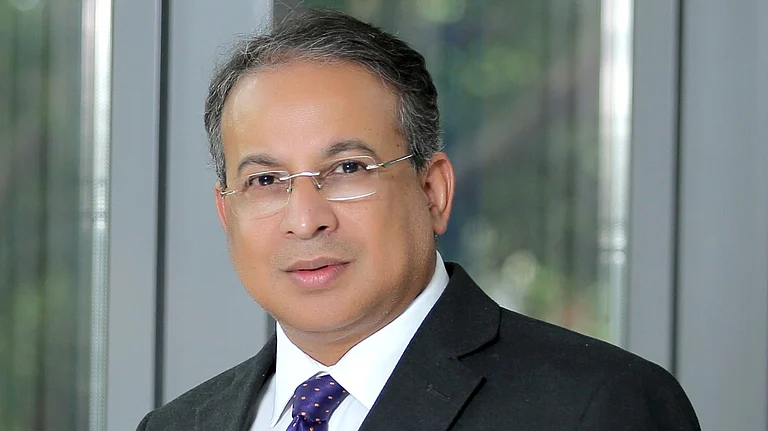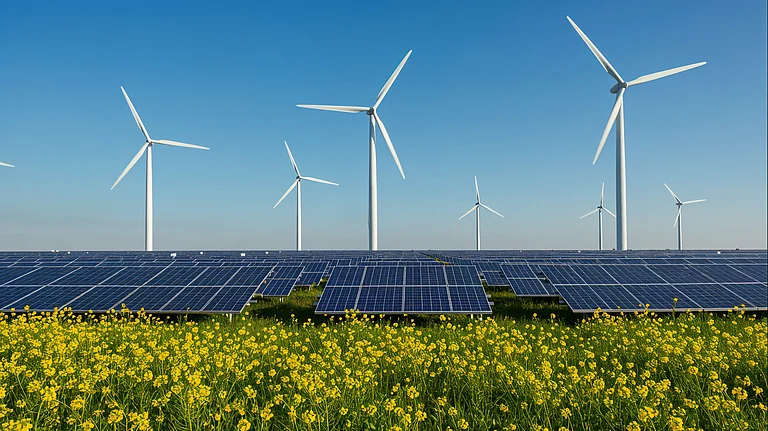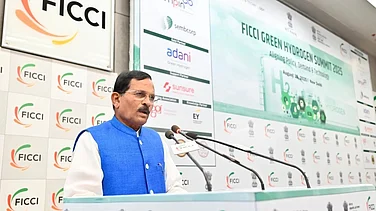Tata Power opened its FY26 account with a modest 6.1% rise in consolidated net profit to ₹1,262 crore in the June quarter, helped by a continued push into renewables and transmission-led stability. Revenues grew 3.9% year-on-year to ₹17,464 crore.
While the performance underscores operating discipline, it does little to shift the narrative in India’s high-stakes energy transition, where rivals such as Adani Energy Solutions and NTPC are accelerating with greater aggression and scale.
Praveer Sinha, Tata Power’s chief executive, called it a “high note” to start the year, citing growth across verticals and reaffirming the group’s target to serve 40 million distribution customers by 2030.
Yet the subdued pace of growth relative to peers raises a critical question: is Tata Power moving fast enough to secure a dominant place in India’s evolving energy architecture?
The company commissioned 652 megawatts of renewable capacity during the quarter, but only a fraction—94 megawatts—was added to its own portfolio. The rest, executed through third-party engineering, procurement and construction (EPC) contracts, signals more than operational momentum; it hints at a possible strategic recalibration.
Tata Power, long regarded as a traditional utility with a growing renewable arm, appears to be leaning into an asset-light model, where execution, integration and technical competence take precedence over outright asset ownership. Rather than deferring investment or reacting to market volatility, these numbers are indicative of a strategic shift in gravity, from generator to enabler.
As one of India’s most experienced solar integrators, Tata Power appears to be tilting towards capital efficiency in an industry that is investment-intensive by default. The rooftop solar business, which touched a record 270 megawatt-peak in installations this quarter, and the smart metering rollout, now at 30 lakh units, further suggest a business model where scale is achieved through deployment, not just through accumulation.
Of course, this approach carries its own trade-offs. Revenues from EPC contracts tend to be one-time and margin-sensitive, unlike the annuity-style cash flows from owned assets under long-term power purchase agreements. It also places a premium on maintaining a robust and diversified order book; one that is inevitably exposed to policy cycles, regulatory delays and input price swings. But in doing so, Tata Power may be seeking to avoid the balance-sheet bloat and tariff uncertainty that have haunted several of its peers.
Its operational clean energy portfolio currently stands at 5.6 gigawatts, with only 1.6 gigawatts slated for addition in the remaining quarters of the year. In an environment where rival players are racing to announce multi-gigawatt expansion plans, this relatively modest target may seem underwhelming. Yet it is also consistent with a strategy that privileges financial discipline over trophy-size announcements. It is, in many ways, a distinctly Tata approach: low on noise, high on execution, and cautious with capital.
However, in a sector defined increasingly by scale, Tata Power’s strategy invites comparison. Adani Energy’s profit surged 35% on the back of a transmission-heavy growth model. NTPC, buoyed by its sheer generation muscle, delivered a 23.3% jump in net profit to ₹5,725 crore, driven by capacity expansion and coal-fuelled revenue gains. Tata Power’s clean energy share of total generation is now 44%, up marginally from a year ago. By contrast, Adani Green has committed to reaching 45 gigawatts of renewables by 2030, while NTPC aims for 60 gigawatts in the same period.
Tata Power’s claim to operational excellence finds its most compelling evidence in Odisha, where its discoms are now hailed as a “national model” for turnaround. The utility has applied for new licenses in Maharashtra—targeting high-growth urban areas like Thane, Pune and Nashik. If successful, this could unlock significant recurring revenue and urban consumer stickiness.
Yet distribution is capital-intensive and politically fraught, especially in states with complex subsidy regimes. While Tata Power has proven its mettle in reforming dysfunctional networks, returns on equity in discoms are often capped and exposed to regulatory flux. That tension between stability and scale—between operational prudence and exponential ambition—lies at the heart of the Tata Power conundrum.
Tata Power’s EPC and rooftop businesses are cash-generative and could lend themselves to monetisation via Infrastructure Investment Trusts (InvITs) or strategic stake sales. Its battery storage and EV charging bets remain under-exploited levers. Unlike peers, Tata Power has not yet signalled a dramatic shift in capital deployment to ride the wave of India’s green industrial policy. There is also the matter of perception. In a market flush with government-linked green hydrogen and offshore wind announcements, Tata Power’s relative silence on new-age megaprojects may be interpreted as conservatism—or caution masking capital constraints.
Tata Power’s Q1 performance is in many ways a model of consistency. But in today’s energy landscape, consistency may no longer cut it. As India’s electricity demand surges past 250 gigawatts and the Centre redefines green investment norms, the spoils will likely go to those who combine execution with scale, and agility with boldness.
































